What’s The Difference Between Overcurrent, Overvoltage & Overload?
There are several basic concepts when it comes to electrical and electronics that are constantly used interchangeably due to their similar meanings. In order to avoid getting these concepts mixed up if you’re talking to your electrician, for instance, it’s a good idea to establish the differences between things like short circuit, overcurrent, overload or overvoltage. After all, if you’re worried about overcurrent protection, it might not be the same with overvoltage or overload protection.
Also, there are quite a few safety devices meant to protect homes from electrocutions, electrical fires or other possible dangers. However, in order to make the right decision as to what kind of devices you are in need of and to be certain that your home is in fact protected, you need to learn how to differentiate the dangers themselves.
What is Overcurrent?
The condition where an excessive amount of current flows in the circuit due to either overload or short circuit is known as overcurrent.
When it is caused by a short circuit, a high current begins to flow in the circuit, where the voltage level becomes almost zero across the load terminals. This can lead to fire, insulation failure, serious damages to the equipment and power system, and even hazardous explosion.
If for instance a 125A circuit breaker’s tripping point, which is rated for 200% and connected to a 100A load circuit, reaches its limit, when the load current increases, it will trip. However, if the load current goes up to 200A, the breaker will instantly protect the circuit from overcurrent caused by a short circuit.
So, overcurrent is basically any situation in which the current flows through a conductor or device goes over the desired value. These situations can be caused by either overload or short circuits, as both are responsible for an excessive current flow.
Overcurrent Protection
Generally, overcurrent protection is actually protection against short circuits (excessive currents begin to flow in the circuit, leading to potentially significant damage to the connected equipment).
In terms of protection devices, there are several options, including overcurrent relays, circuit breakers, temperature sensors and solid-state power switches. Also, thermal-magnetic circuit breakers are used to offer protection against overcurrent and overload.
What is Overload?
When the load takes more current than normal or what’s rated, then an electrical overload happens. For instance, a 12 gauge wire can carry 20 amperes current in safe conditions. To protect the circuit, you need a minimum of 20A or 125% of load amperage. So, in this situation, to ensure protection, we need to use a maximum of 25A circuit breaker. However, if you decide to use a 30A – 35A circuit breaker as opposed to the rated CB, this will allow 30 to 35 amperes current to go through the load circuit. The current will flow through wires rated for 20A.
To put it differently, the circuit breakers may allow a greater current amount than what’s supported by the wires. As a result, these may heat up and catch on fire or damage the circuit, together with the appliances connected to it. The breaker will not trip, because the appropriate model was not used.
Another example of overload would be connecting a 1.5kW load to the 1kW alternator, transformer, or inverter. Basically, it’s about allowing up to 1.5 times higher current to flow to the circuit instead of the rated current.
Overload is, in fact, a type of overcurrent, causing overheating in the connected device.
Overload Protection
Protection for overload is actually protection against overheat, caused by a flow of overcurrent within the circuit for a specific timeframe.
To ensure protection against overload, slow blow circuit breakers and overload relays are generally used. Thermal magnetic circuit breakers are used to offer protection against both overcurrent and overload. Overcurrent protection is offered by the “magnetic” element, whereas the “thermal” element protects the circuit from overload.
When 120% – 160% greater current than the rated current begins to flow within the circuit, the overload protection is activated.
What is Overvoltage?
When the operating or supplied voltage is higher than the rated voltage, as specified by the system’s manufacturer, the situation is known as overvoltage.
Basically, overvoltage is, as the name suggests, a higher supply of voltage than the permissible amount. When the supply voltage equals or exceeds 1.1, which is 110% of the permitted voltage of an appliance, this qualifies as overvoltage.
If the rated voltage of an appliance is 230 V AC ±10% and this goes up to 250V+, this will cause instability in the system. The instability created by the overvoltage also leads to excessive heat and it can damage the device or appliance used.
Overvoltage Protection
If the overvoltage was caused by lighting strikes, switching surges, insulation failures, the power system can be protected using voltage dependent resistors (VDR), avalanche diodes, lightning rods, arcing horns, gas discharge valves, etc.
The Bottom Line
Some of the situations mentioned above could take longer, whereas others might be instant. That is why understanding the terms and concepts used in the electrical field is of huge importance. This is really the only way you can be certain that you are investing in the right protection for your household.
Otherwise, you might find yourself investing in unnecessary protection and leaving other areas completely exposed to danger. And in such cases, danger could mean electrical fires, causing great damage to your property. Or worse, it could mean electric shock, which in some cases may be fatal.
A Simple Electrical Upgrade Can Upgrade Your Quality of Life
The right electrical upgrade can dramatically improve the value and appearance of any home or business. You’ll be amazed at what a difference the right electrical upgrade can make for your home or business. Make sure that when you select an electrical company to do the enhancement of your home and you have decided to take your enhancement to the level where you require an electrical upgrade that the technician at the company has a good working knowledge and the experience to properly guide you in this area.
When you decide to upgrade, our well-trained and certified electricians have all the experience and training needed to complete your electrical panel upgrade project from start to finish, with a minimum of fuss or disturbance. Please contact us right away at 310-800-2401






